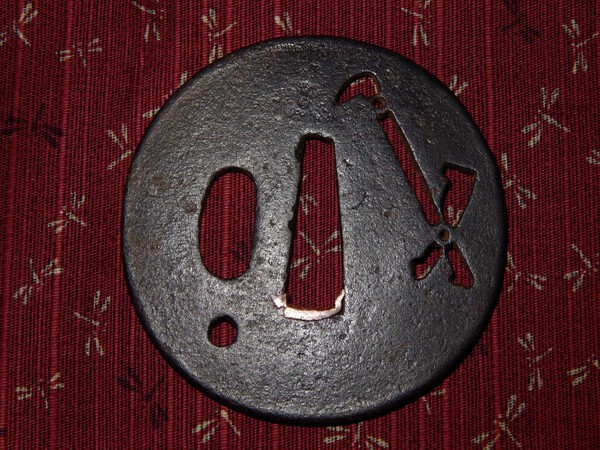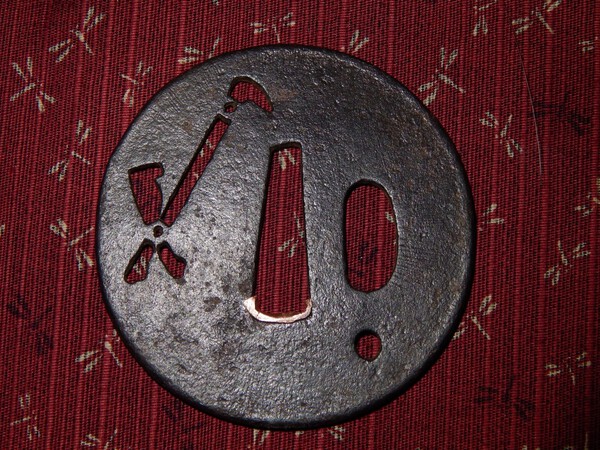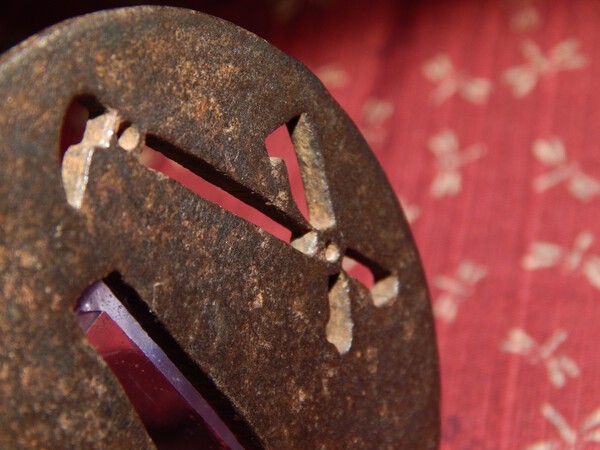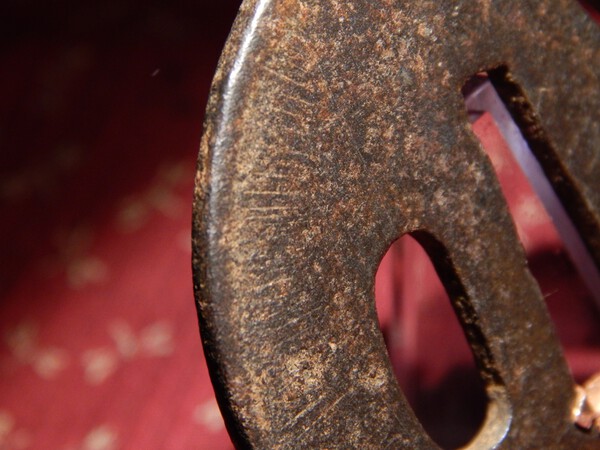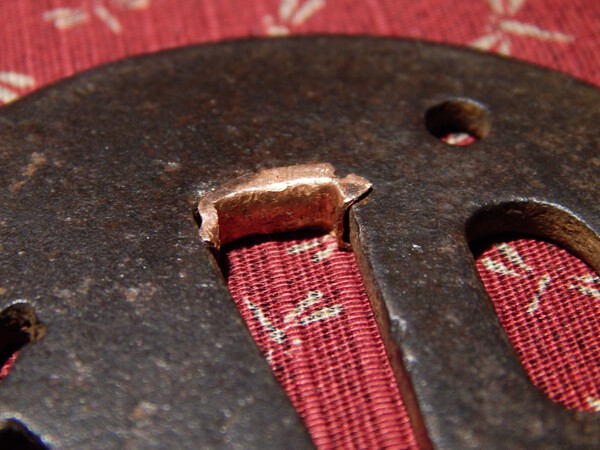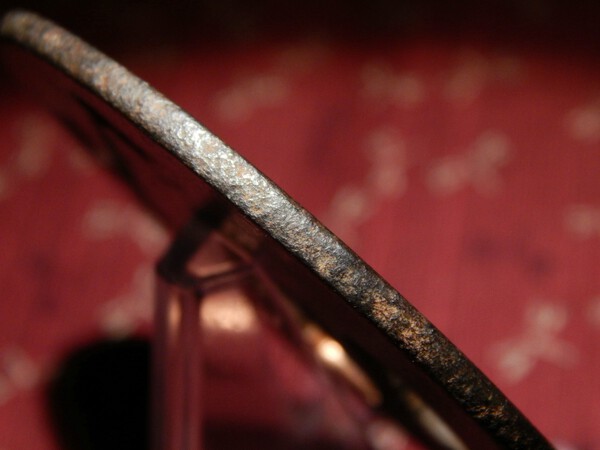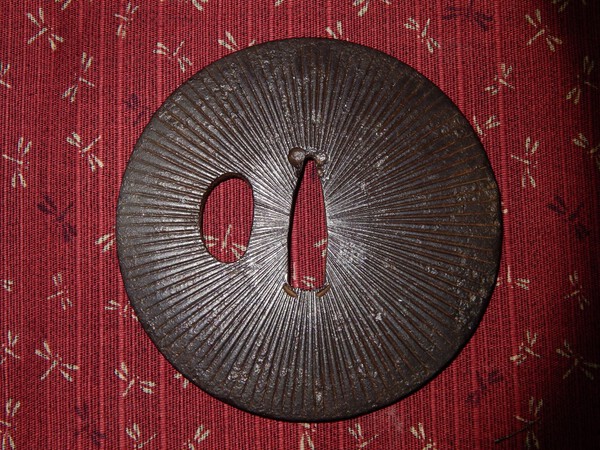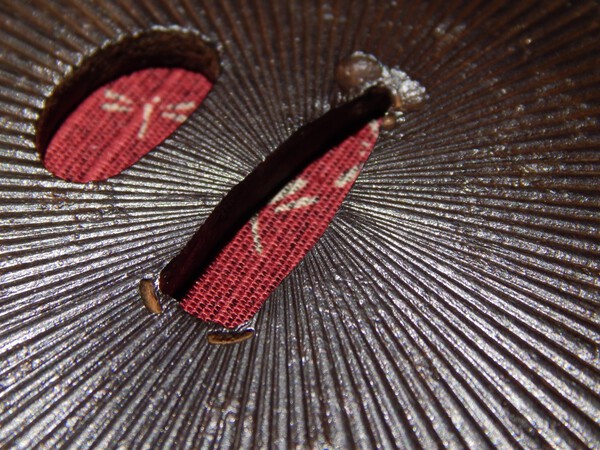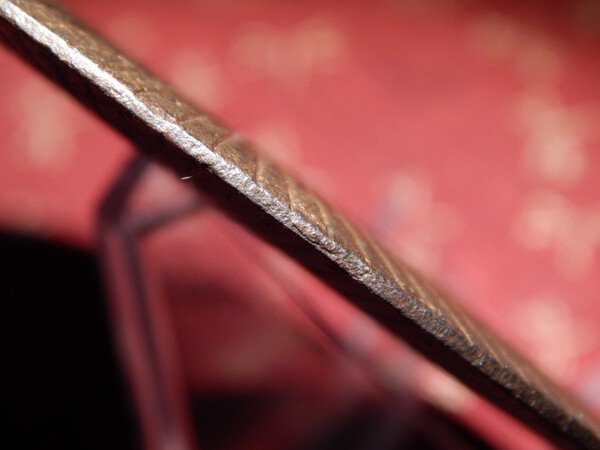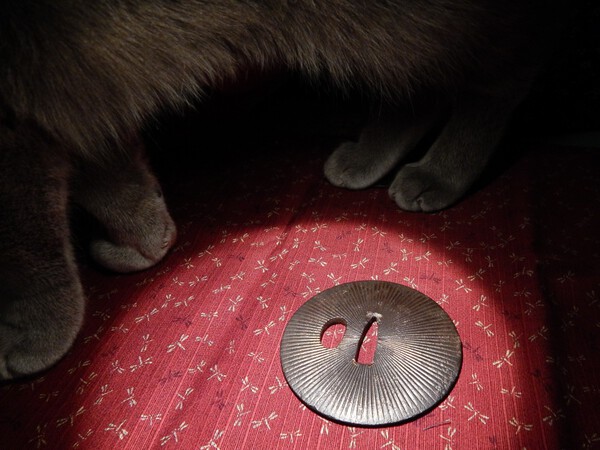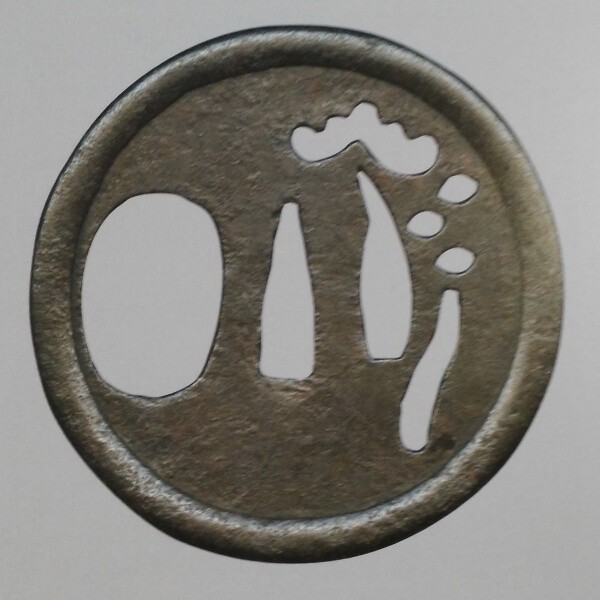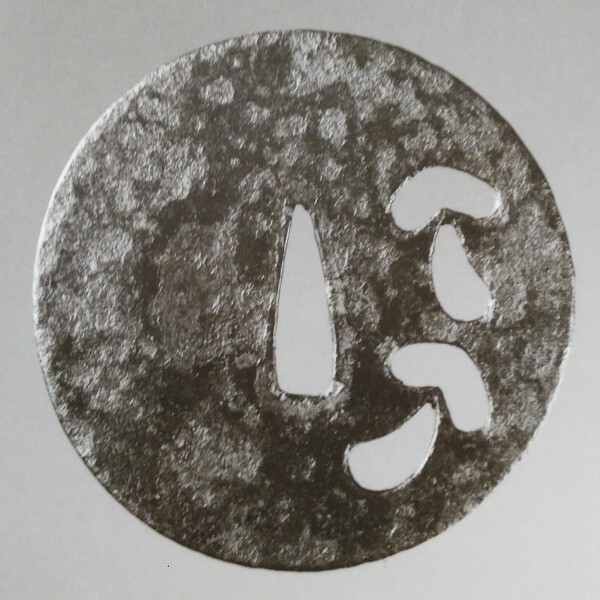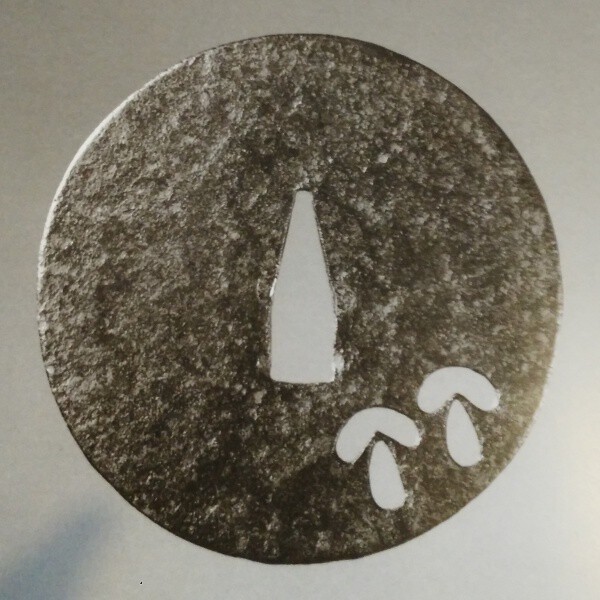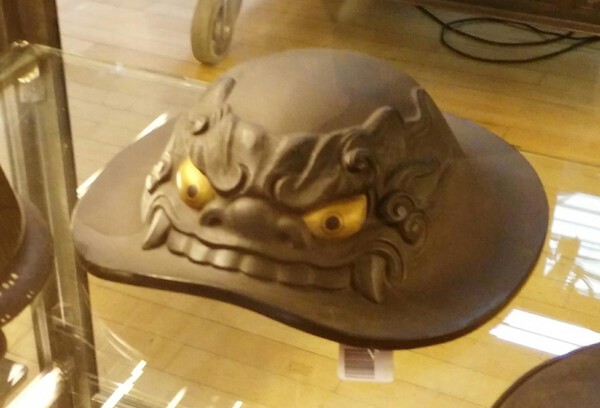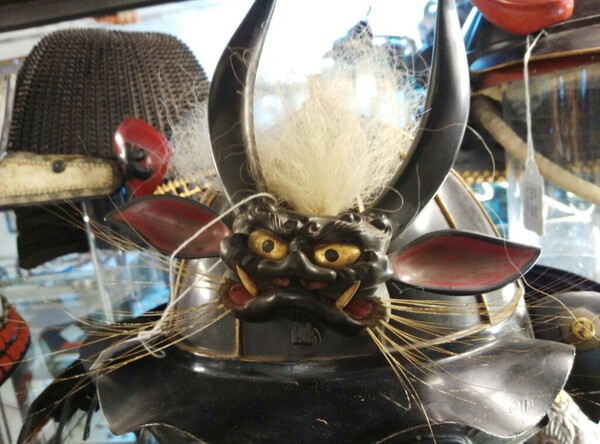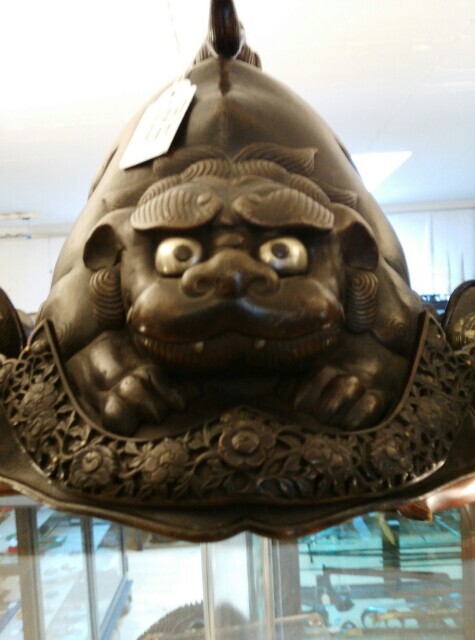-
Posts
501 -
Joined
-
Last visited
-
Days Won
5
Everything posted by Andi B.
-
...I can confirm the 7% but you have to prove - e.g. with NBTHK papers - that the piece has really historic value... Few years ago it was no big problem to convince the customs officers (in Munich) but recently they are stricter...
-
...the body has stripes and it's not a Zebra => Tiger! And I can also see the tigers 'collar' - for me it's clear. Nice tsuba! (I like the old fashioned tigers a lot, e.g. this style:https://www.trocadero.com/stores/thekura/items/1098500/catphoto.jpg)
-
Momoyama sounds plausible... Michael Hagenbusch said, while looking at my katana blade dated 1500-1530 (my guess) with a silver 2 piece habaki, a simple copper one would match better. I'm not sure if he was driving at the age or quality of the blade but I think/hope it was the age...
-
...how can a 2 piece habaki improve the fit on a tired blade (if the nakago is wider than the habaki area)? Only an idea: Could exchanging the outer part be an option to improve the fit in the saya?
-
...the amida yasurime tsuba has a diameter of 7,7 cm. The sukashi is 6,2 x 6,6 cm.
-
Hi, the tsuba arrived today - together with another piece with "carved" amida yasurime. Below some pics from the ko-sukashi tsuba (yes - the sekigane looks new and DIY) and the second tsuba with some characteristic "neko ashi" (?). Feel free to comment on both pices...
-

Connoisseur's Book Re-Release
Andi B. replied to md02geist's topic in General Nihonto Related Discussion
...I ordered a copy on 14.01. but it's still not shipped by Amazon Germany. Usually they should know, how many copies they can sell at which time... -
0,66 USD per gram is ok... ...I'll post some pics for further examinations when I received it...
-
Hello! Years ago I polished my stock removal DIY tanto blade using available stones, grinding paper and acid. It was a good experience! Now I really know, it's impossible for me to do any kind of traditional job on a Nihonto (or any other object with this shape). Actually it's impossible for me not to destroy it... A traditional polish is expensive but when I think at the price of the required traditional equipment and the price of my time, which I would need to do the job - not considering (but not forgotten) - the price of the required Nihonto polishing knowledge (books, shows and years of learning), decision is easy...
-

Restoration Of Tosogu, Nihonto, Etc...
Andi B. replied to Steve Waszak's topic in General Nihonto Related Discussion
Hello, my 2 cents while waiting for the train: Aren't blades actually consumer goods which require a special 'destroying' maintenance to keep their functionality till they are consumed? Like e.g. a pencil? I think, smiths and polishers fully aware of the limited lifespan of their art & objects...do we consider this in out thoughts or is it absolutely wrong? -

Paul Martin's Latest Book Translation
Andi B. replied to boydie4207's topic in General Nihonto Related Discussion
https://www.amazon.co.jp/Swords-Japan-Beginners-Illustrated-Handbook/dp/4808710714/ref=sr_1_fkmr1_1?ie=UTF8&qid=1478164708&sr=8-1-fkmr1&keywords=Swords+of+Japan+Kubo -
Thanks for the feedback, Acc. to my books (silver Sasano and golden Kurogane no hana) it looks like mushrooms. Atached I have 2 pine tsuba and 4 mushroom tsuba images:
-
Hello, here I have a Ko-Sukashi [(Ko?)-Tosho] Tsuba but I have no more information about it. Size is 73 x 75 mm, nearly 3 mm thick at the nakago ana and 2 mm at the rim. Motif are mushrooms and there is an oddly shaped hitsu-ana as you can see on the images. Sekigane are missing (...and I'm almost tempted to think about adding some because - from my uneducated point of view - this nakago-ana looks naked without...). I like the simple old sukashi style but have no clue, whether this pice is old or a young remake... So any input and lecture is welcome!
-

Munich 24/09/2016
Andi B. replied to CSM101's topic in Sword Shows, Events, Community News and Legislation Issues
...there was this Oiyebo Mempo for 34.000 EUR... Is this a realistic price for a mempo??? -
Atari means “strike“ in this context I think... Isn't atari also a correct guess in kantei?
-
-
-
...because “John“ shouldn't be part of the link...
-

How To Understand Hard And Soft Jijane
Andi B. replied to lonely panet's topic in General Nihonto Related Discussion
I heared the theory, that the availibility of only softer source steel was compensated by creating a harder hamon style. And if hard steel was used, a very hard and brittle edge was avoided...(?) But I think, hard and soft is relative, when talking about a cutting edge... -

How To Understand Hard And Soft Jijane
Andi B. replied to lonely panet's topic in General Nihonto Related Discussion
Hi Uwe, the first suguha is too easy for me , but for the others I have no clue. Do we actually have to look at the hamon too, to decide whether the steel might be hard or soft: “Softer steel goes with harder nie based hamon“, “harder steel combined with softer nioi bases hamon“? Or is this nonsens? Is it really a question of hard and soft material or is it the “appearence“ only? -
Has anybody an idea how many paper volumes the complete story will have? No. 37 is the latest available (in German)...
-
The blade was traditionally(?) made by the Swiss smith Mr Hollmann and so he tests his own sword. But it's not a real Nihonto. It's from a documentary at least 10 years old...
-

Question About Shipping To Germany From The Us
Andi B. replied to Jiro49's topic in General Nihonto Related Discussion
...and it's 19% of the total amount incl. shipping! (If you can proof, your item is a treasure (papers) you can try to ask for 7%...) But 300 USD is too much for shipping to Germany! -

Downsizing My Tsuba And Fittings Collection
Andi B. replied to Leporello's topic in For Sale or Trade
-
Grev, is it this?



